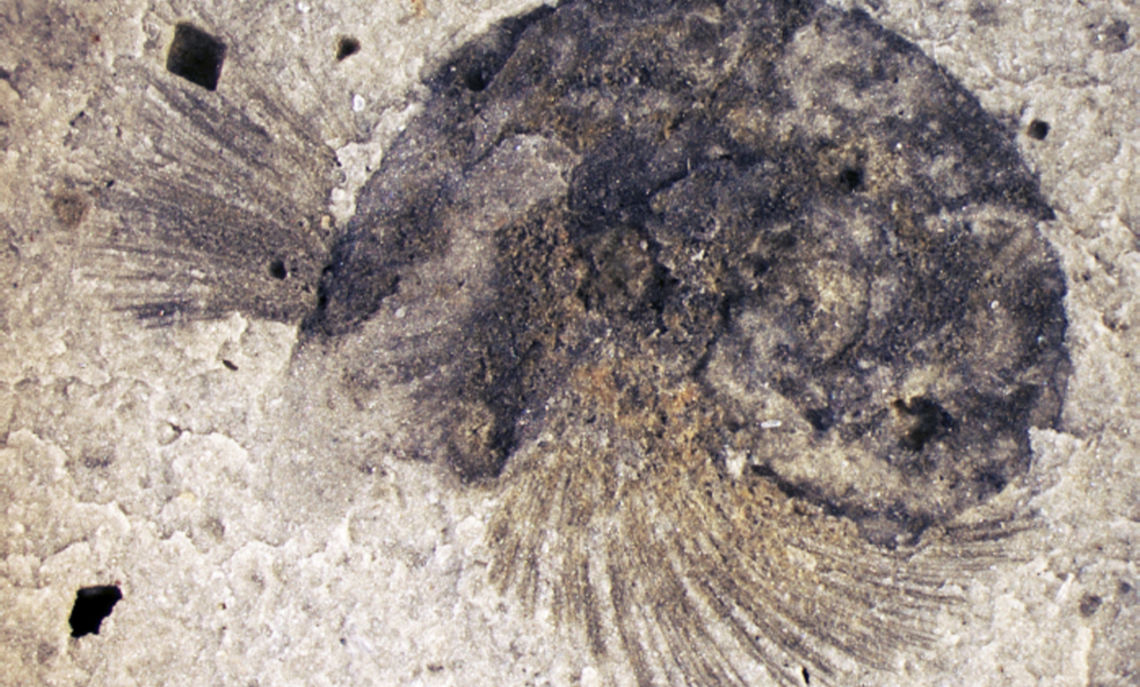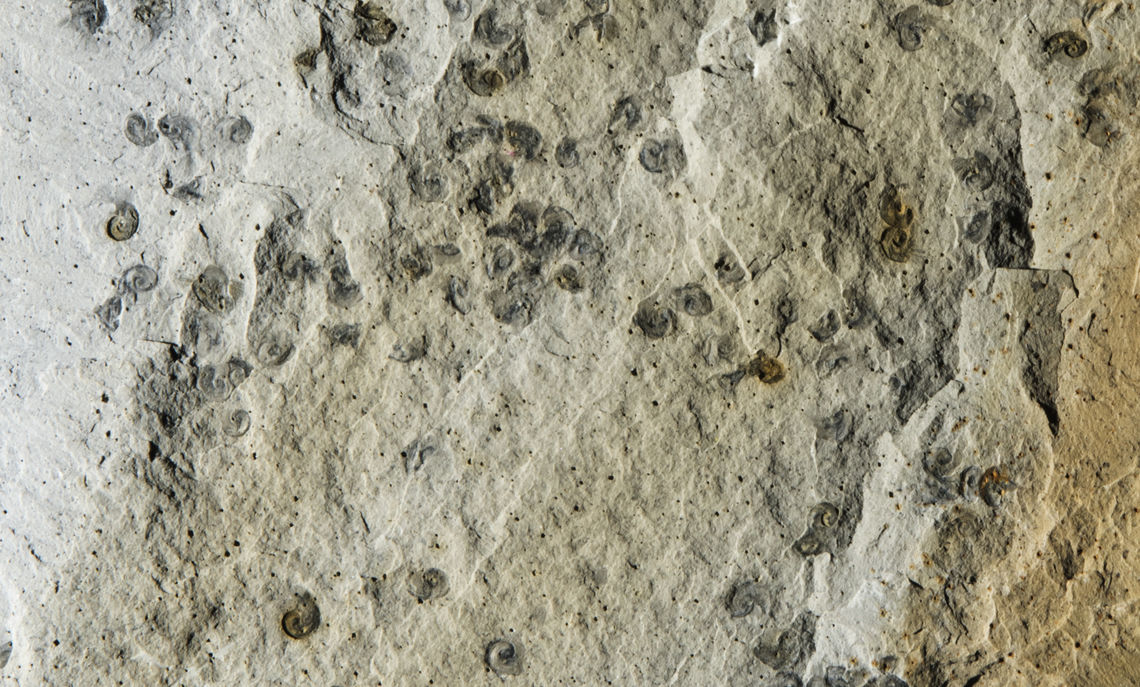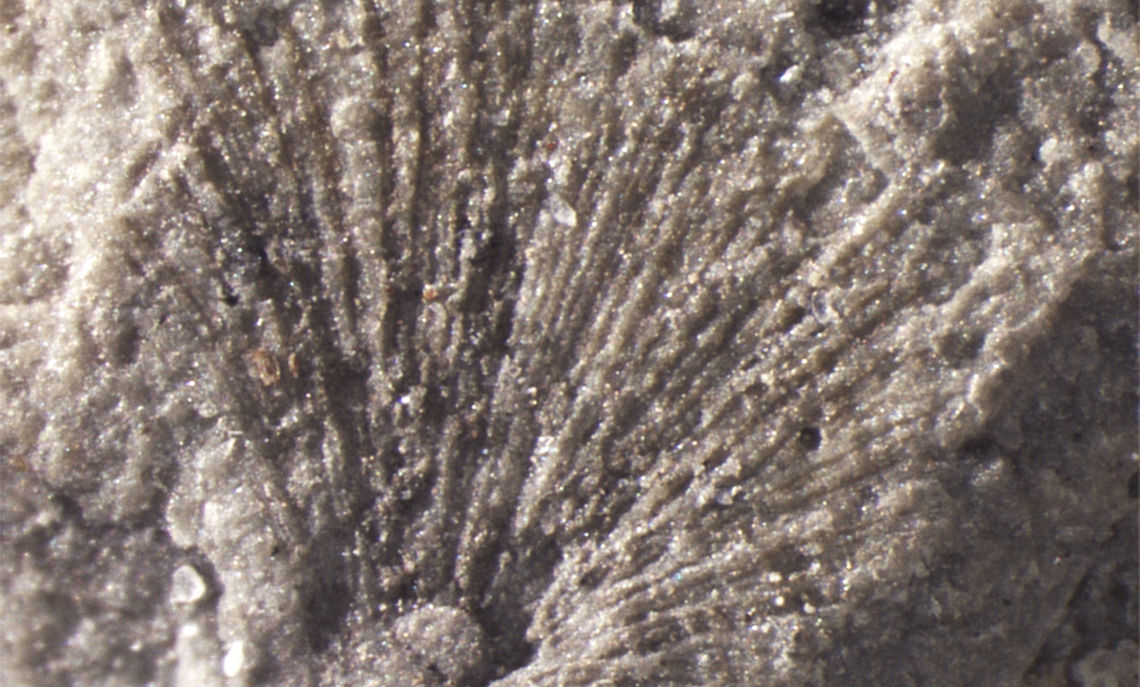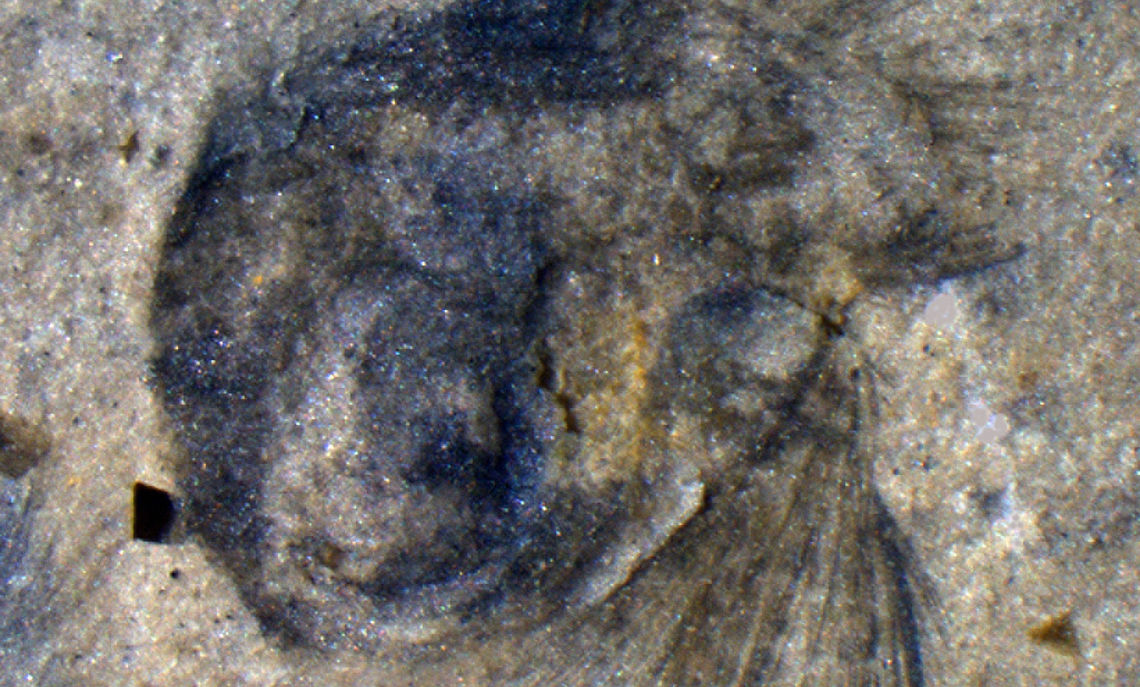F&M Stories
512-Million-year-old Fossils from Lancaster County Record the Origin, Relationships of Snails
Paleontologists worldwide are excited by a Pennsylvania collector's discovery of fossil snails that confirm an evolutionary link to worms, predicted 25 years ago by molecular biologists.
Among the oldest fossil molluscs, these marine snail shells are accompanied by impressions of clusters of bristles, inferred to have been attached to a pair of appendages, never before been seen in snails, according to Franklin & Marshall College Professor of Geosciences Roger Thomas.
No more than dark spots on a small slab of shale until put under a microscope, the tiny fossil snails were found in Lancaster County's Manheim Township by Lancaster resident Kerry Matt, an experienced collector. He made the fossils available for study by Thomas and his colleagues Jakob Vinther (University of Bristol, U.K.) and Bruce Runnegar (University of California, Los Angeles).
Now, following several years of study, Thomas, Runnegar and Matt have authored a paper, just published in the scientific journal Palaeontology , on these remarkably preserved fossils. The specimens will be deposited in the collection of the National Museum of Natural History, at the Smithsonian Institution.
"It has been very exciting to have the chance to work on fossils that not only link the molluscs and annelids [worms], but also shed light on the origin of torsion (a 180 degree twist that changes the direction of the gut) in snails. This is the most characteristic feature of their anatomy. Its mode and time of origin is a classic problem in molluscan evolution," Thomas said.
The fossil snails lived during what geologists call Cambrian time, when what is now Lancaster County was a shallow ocean floor, long before the Appalachian Mountains came into being.
Scientists long thought arthropods and worms were close relatives among the major groups of invertebrate animals, largely because of their segmentation. But evidence from gene sequences of living organisms led molecular biologists to infer that arthropods (including crabs, centipedes and insects) and other skeleton- or skin-shedding animals evolved as one major group, whereas worms, molluscs and shell-bearing brachiopods are related as another group of phyla.
These fossil snails with bristle-bearing appendages, apparently made of chitin, now confirm this relationship. Paired anterior-lateral appendages bearing stiff bristles are characteristic of many marine worms, but they have not previously been observed in any living or extinct marine or terrestrial snail. In addition, the appendages confirm, together with characters of other species, that this snail, formally known as Pelagiella, is the earliest mollusc known to have been a gastropod, having undergone torsion in the course of its development.
Related Articles
September 29, 2025
Students Make Waves as Susquehanna River Watchdogs
Roselyn Ovalles ’26 and Grace Uwezukwe ’26 spent the summer monitoring the Susquehanna River and its many local tributaries as interns with the Lower Susquehanna Riverkeeper Association.
June 3, 2025
How Do F&M Students Spend Summer Break?
What do F&M students do during the summer? Hear from 10 students and recent graduates to see the breadth of possibilities available, from internships and classes to travel and personal development.
November 6, 2024
Where Research Can Take You
Undergraduates don’t usually present research before a national organization of professionals, but that was the unlikely situation a Franklin & Marshall student found herself in this year.




